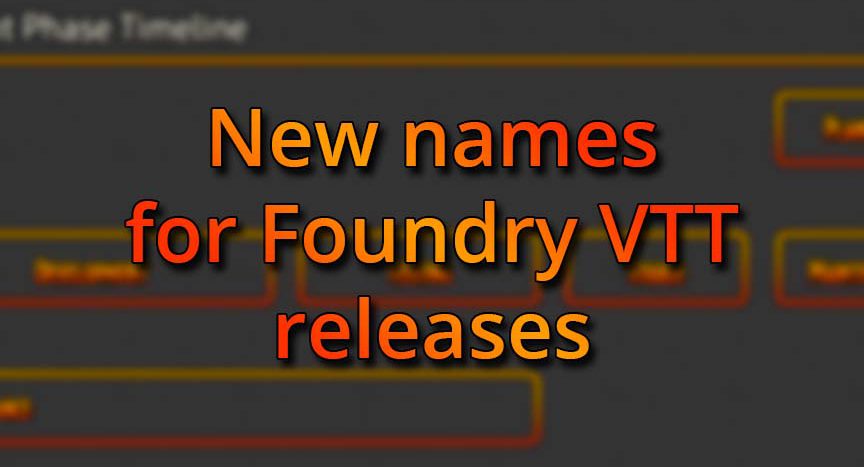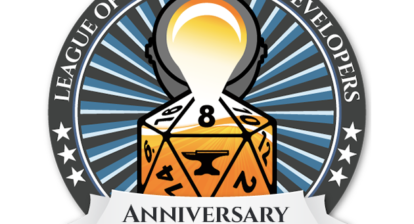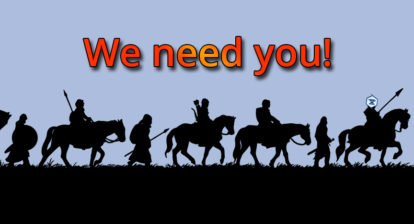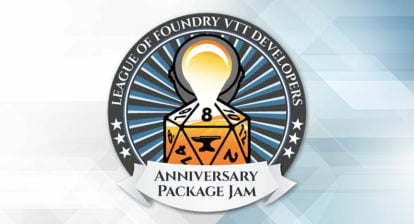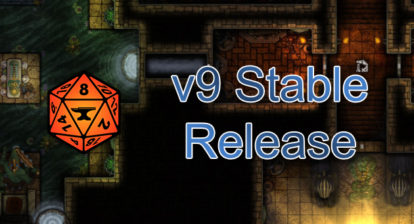Last month, Foundry Gaming announced an essential change regarding future software updates. Currently in its “0.8.9” version, the forthcoming update of the software is expected by the end of the year. This version will contain major new features such as card pack management and significant performance improvements. However, the first change that will be visible to users is the name of the version itself. Foundry Gaming has decided to put an end to its “0.x.x” naming convention, which was deemed unsuitable for the development process used by the company. The next version, named “version 9”, uses simplified numbering and aims to make everyone agree: the community of developers, users, and Foundry Gaming themselves.
This name change is the tip of the iceberg, as Foundry Gaming reimagines their development cycles in a new phased timeline.
In this article, we will see what these changes mean from the user’s point of view. We also interviewed Anathema, Project Coordinator at Foundry Gaming, for his insights.
The new naming convention
The name of the versions is now directly linked to the current development phase. Thus, it is no longer necessary to search the official website or Discord announcements when hearing about version “0.8.5” to determine whether a version is intended for the general public or community testers and developers.
Separated into three parts, each version follows the same path. Only the number of iterations per phase is flexible and will depend on the stability and complexity of each release.

In addition, each release is labeled with a build number. This number is a unique identifier that further determines the code version packed into this release. In general, you should not need to worry about this number if you are not a developer yourself.
As for the phases themselves, Foundry Gaming has redesigned its six-phase approach for each release, from planning to the maintenance period.
An article dedicated to this new cycle is available at this address: https://foundryvtt.com/article/versioning/

Our questions to Anathema and Foundry Gaming
FHub: Can you explain why the version numbering scheme matters for Foundry users? We do not hear much about versions on other VTT platforms. What makes Foundry different in that regard?
Anathema: The answer to this one is kind of two-fold. As a self-hosted platform, Foundry Virtual Tabletop offers users a lot of control over how and when software updates are applied to their games.
By providing very clearly labeled definitions for a version, we can communicate with the target audience and help make sure that people aren’t accidentally using an unstable version designed for testing. We also offer a very high degree of customization through add-on modules, allowing users to set their games up the way they want.
Unfortunately, as any PC gamer will tell you, using mods for a video game comes with a degree of uncertainty about whether an update might disrupt gameplay. By communicating our versioning schema better to users, we can help users with module-heavy games better understand when the time is right for an update.
FHub: When Foundry got officially released last year, it was under the “0.6.0” version number. One could think the first version would have been “version 1”. What was the meaning of this number at that time?
Anathema: During version 0.5.x the software was feeling very stable and pretty well-rounded in terms of features, and Atropos (owner and lead developer) felt that the software had reached a good place for it to transition from a Patreon early-access subscription to a directly purchased license.
That didn’t, however, mean that the development was complete. Even today, there are still some major features that we feel are missing and we’re still determined to add. Atropos felt that releasing as 1.0 would give the wrong impression, that the software was somehow ‘done’ and had added everything we wanted to add.
That simply isn’t the way Foundry does things as a company. We are always looking to add new features, to iterate on the software, and to bring new functionality in for our userbase. As such, we proceeded from one major version (0.5.x beta) to the next major version (0.6.x release) and released the software for purchase.
FHub: Starting with the next major release, Foundry VTT will go from version 0.8.x to version 9. What was the reasoning behind this change?
Anathema: Ultimately it was really related to communication. During the 0.8.x development cycle, we observed that our community developers had some difficulty determining when best to begin the process of updating their modules and systems for the new version.
We also heard some feedback that the period for testing and giving feedback felt short for community devs. Obviously, we don’t pressure community developers to update on any sort of schedule, and we recognize that people have lives outside of voluntarily developing their projects, but we also want to be sure we’re doing everything we can to ease the burden of maintaining community projects.
By changing our approach to versioning to more closely align with our internal phased approach to development, we can better communicate with our community developers what stage a new version is in.
If we’re operating in the prototyping phase, the community developers know that major changes are coming with each prototype version, but by the time we’re in the API Development phase, it should be safe for them to begin updating their content and providing us with direct feedback on changes we should make to better support them.
FHub: As a user, when should I feel safe to update when a new version drops?
Anathema: Our target is that stable releases should always be considered safe for a user to update to.
Versions marked as stable are designed to have minimal impact on currently running games and to allow a user to install and use new features. However, with recognition to users who run their worlds with a large quantity of modules, it is important to assess whether your modules have updated to the latest version or not.
Foundry Virtual Tabletop does not take into account module stability when we mark an update as stable, so for heavily modified games, a stable release can (and always will) cause changes to your game. We beat this drum as much as we can, but in any case, users who are updating should ALWAYS back up their user data folder before proceeding with an update.
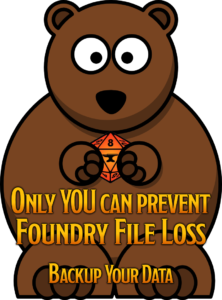
To save heartache and data loss, it’s good to practice safe data storage. You can backup your Foundry VTT data at any time.
Video Tutorial courtesy of Encounter Library:
https://youtu.be/OmbxMmqNNXU
FHub: How will this change affect my modules and systems?
Anathema: Users of modules and systems should see some pretty big benefits in this versioning change, though they may not be readily apparent.
By providing community developers with increased communication and increased clarity throughout our phased approach to development, we hope to significantly ease the difficulty of updating third-party packages for Foundry VTT.
As a result, users should be able to trust that the modules and systems they use won’t be as drastically impacted by changes in the core software. In addition, the new versioning system means we can allow community developers to mark their modules compatible with an entire Version, reducing the occurrence of inaccurate compatibility labels in the interface for users.
Effectively, the average user should only see benefits coming from this change for their usage of modules and systems.
What do you think of this change? Let us know in the comments.



